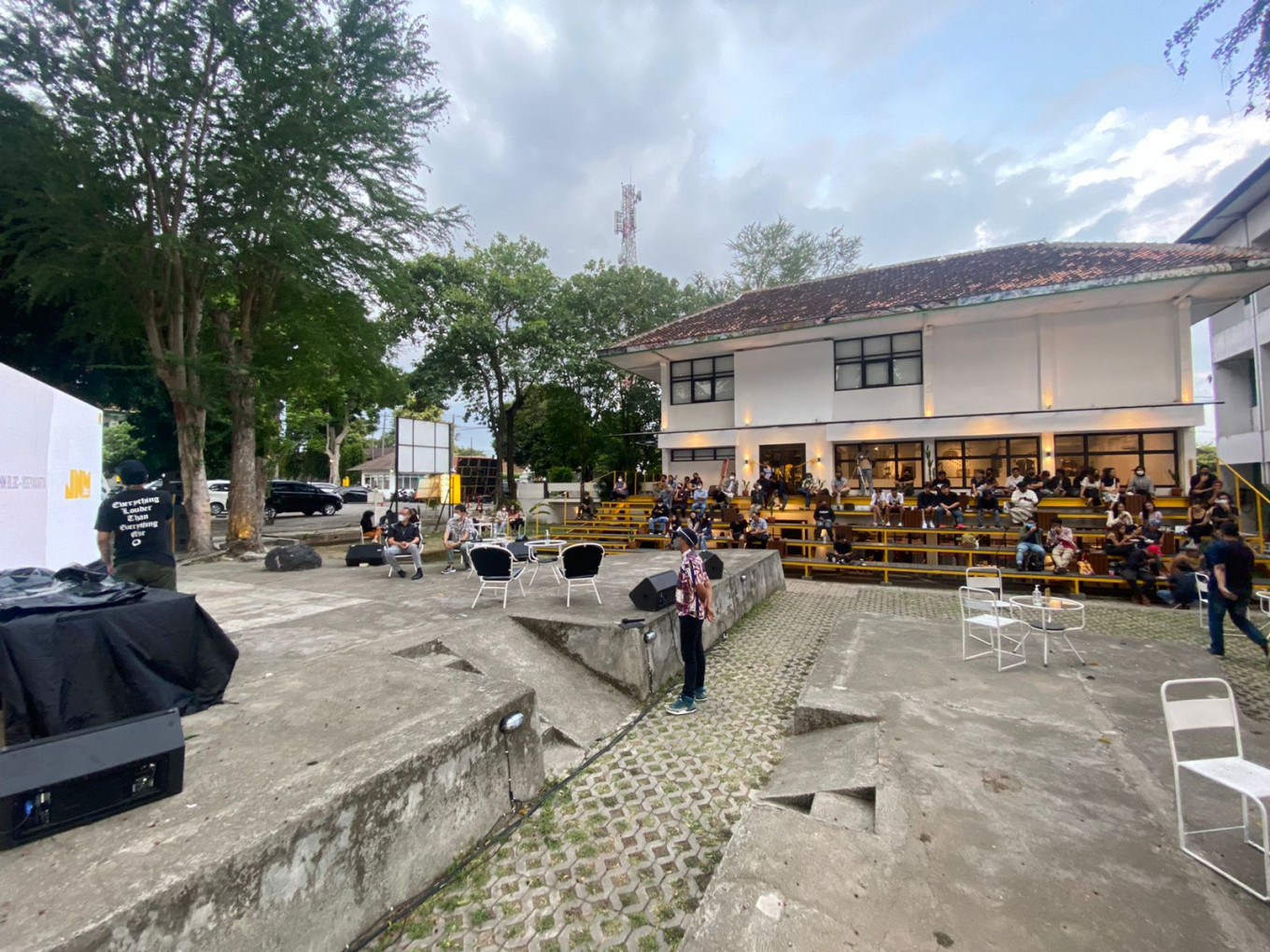Popular Reads
Top Results
Can't find what you're looking for?
View all search resultsPopular Reads
Top Results
Can't find what you're looking for?
View all search resultsJNM Bloc officiated in Yogyakarta’s legendary JNM complex
The Jogja National Museum (JNM) complex in Wirobrajan, Yogyakarta, holds a special place as a venue for underground music gigs as well as a knock-down gallery for struggling artists.
Change text size
Gift Premium Articles
to Anyone
F
or many art students, Yogyakarta gig goers, and even touring punks from around the country, the Jogja National Museum (JNM) complex in Wirobrajan, Yogyakarta, holds a special place as a venue for underground music gigs as well as a knock-down gallery for struggling artists.
Recently, 4,000 square meters of the 1.4 hectare complex have gone through a major gentrification after Radar Ruang Riang (RRR) - the entity responsible for the success of South Jakarta’s M Bloc - and Yayasan Yogyakarta Seni Nusantara (YYSN) - the foundation managing JNM - collaborated to create Paviliun JNM Bloc.
Officiated by KPH Wironegoro from YYSN and Handoko Hendroyono from RRR on Oct. 21, the complex now hosts coffee shops, an ice cream parlor, a cocktail bar, a photography shop and an art shop.
The complex is open to the public from Monday to Thursday from noon to 9 p.m. and Friday to Sunday from 11 a.m. until 9 p.m. Visitors should comply with health protocols and check-in via the PeduliLindungi vaccine-monitoring app before entering the compound.
Hopefully when the pandemic is over, the management plans to use the space as a boutique complex and a venue for culture-related events such as art shows, photography exhibitions, film screenings and concerts. They also plan to refurbish 10,000 square meters more of the site and host more small businesses.
The JNM’s history is intertwined with the history of Indonesia’s arts and culture scene. In the 1950s, it functioned as the campus of the Indonesian Visual Arts Academy (ASRI). The campus gave birth to Indonesian maestros such as Sapto Hudojo, Saptoto, I Nyoman Gunarsa, Edhi Sunarso, Amri Yahya, Djoko Pekik and Widayat G. Sidharta. When ASRI was turned into the Indonesia Institute of the Arts (ISI) and moved to Sewon in Bantul in 1998, the complex became neglected.
In 2006 YYSN took over the management of the complex and renamed it the JNM. Since then it has often served as a venue for art exhibitions and concerts that are key factors in shaping Jogja’s cultural outlook.











